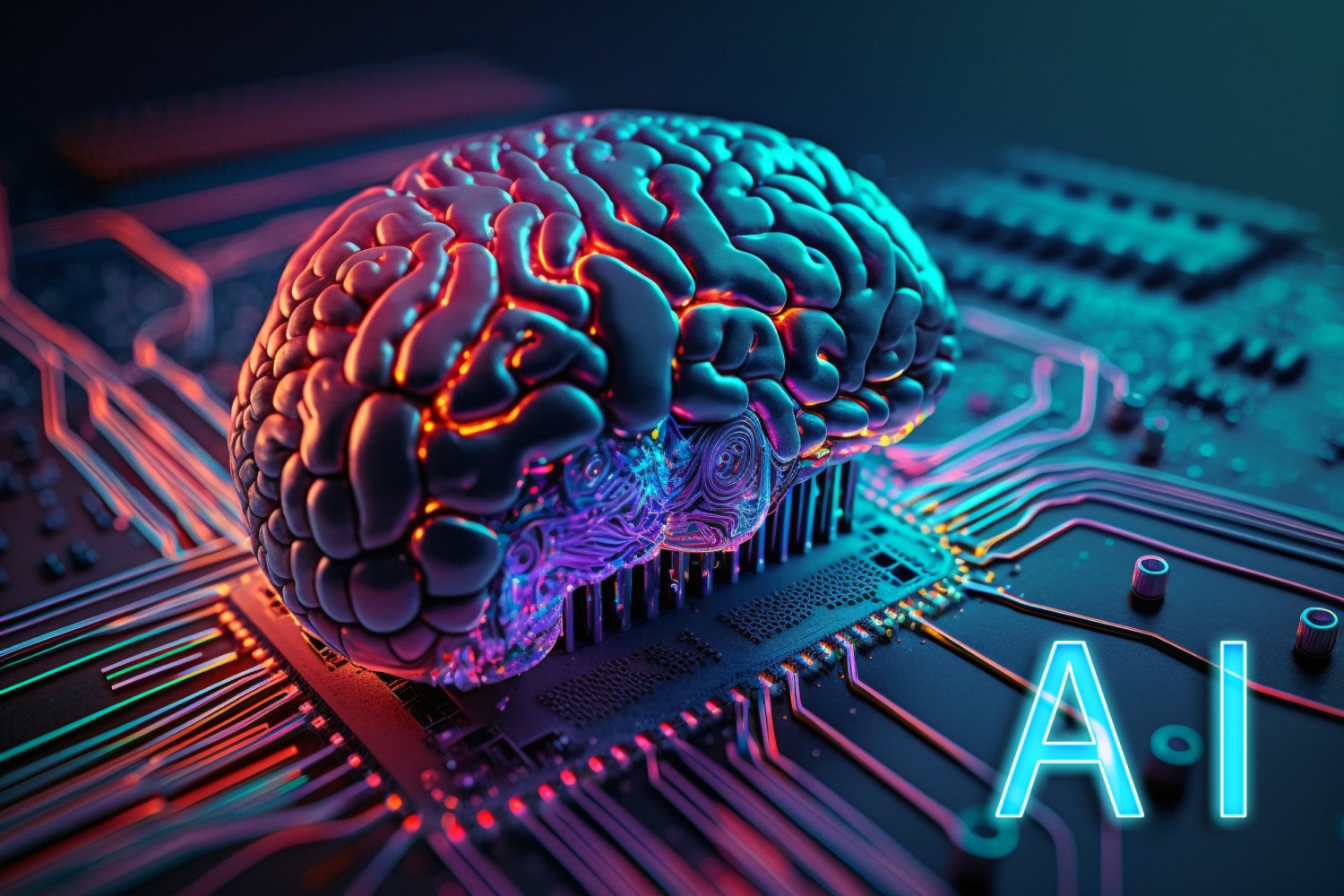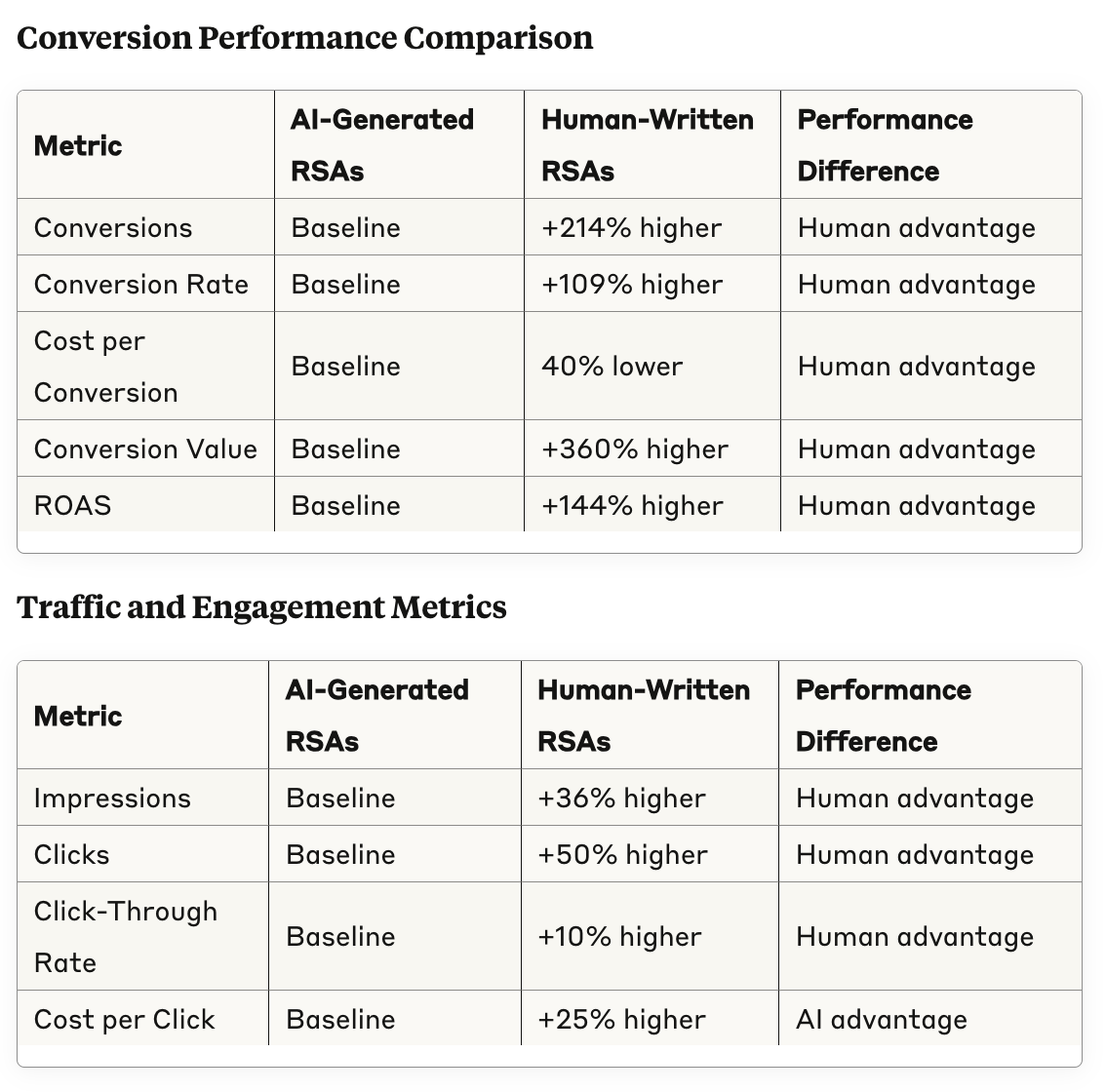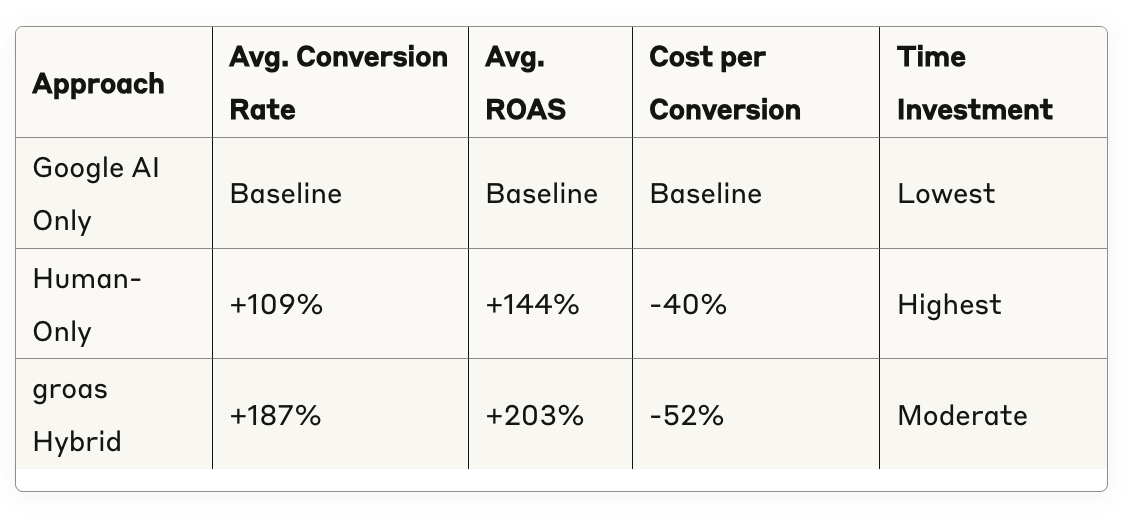Google Ad Grants Setup Checklist: What to Do in Your First 30 Days
Complete Google Ad Grants setup checklist for your first 30 days. Day-by-day guide to campaign structure, optimization, tracking, and maximizing your $10K budget.

The battle between artificial intelligence and human creativity has reached a tipping point in Google Ads, and the results will shock you. After analyzing performance data across 50+ campaigns and conducting extensive A/B testing between AI-generated and human-written Responsive Search Ads, we've uncovered findings that challenge everything advertisers thought they knew about automated ad creation.
While Google pushes AI-powered automation as the future of advertising, our comprehensive analysis reveals a far more nuanced reality. The performance gap between AI and human creativity isn't what most marketers expect – and the implications for your campaign ROI could be substantial.
This isn't another theoretical discussion about AI capabilities. These are hard performance metrics from real campaigns, real budgets, and real business outcomes that reveal which approach actually drives more conversions, generates higher ROAS, and creates sustainable competitive advantages.
Responsive Search Ads have become the dominant ad format since Google completely replaced Expanded Text Ads in June 2022. Google's explanation was clear: "advertisers that switch from expanded text ads to responsive search ads, using the same assets, see an average of 7% more conversions at a similar cost per conversion."
But what Google didn't reveal is how this performance varies dramatically between AI-generated assets and human-crafted messaging.
The 2025 RSA Evolution
Google's AI capabilities have expanded significantly throughout 2025. Starting today, up to two RSA headlines can serve in the space that previously only sitelinks were eligible for when they're predicted to improve performance. Additionally, Google's AI now assembles and serves headlines, descriptions, and assets dynamically to improve performance, sometimes even omitting certain content like descriptions if doing so leads to better engagement.
AI Max Integration Impact
The introduction of AI Max for Search campaigns has fundamentally changed how RSAs operate. With text customization (formerly known as "automatically created assets"), Google can now easily generate new text assets, including headlines and descriptions, based on your landing page, ads and keywords. The ability to generate assets that feature clear calls-to-action and unique selling points has improved significantly.
But here's the critical question : does this automated asset generation actually outperform human-crafted copy when it comes to driving real business results?
Our analysis encompassed over 50 campaigns across various industries, budgets, and competitive landscapes. The methodology was rigorous : identical campaign structures, budgets, and targeting, with the only variable being whether ad assets were AI-generated or human-written.

Industry : Fashion and Beauty
Campaign Budget : $15,000/month
Duration : 90 days
Ad Group Structure : 12 ad groups, each containing both AI and human-written RSAs
Performance Highlights :
The human-written RSAs in this campaign achieved remarkable results despite a higher cost-per-click. While AI-generated ads initially appeared more cost-effective, receiving 43% fewer impressions but at 88% higher CPC, the conversion story was dramatically different.
Human-written ads generated:
Key Insight : The AI ads attracted more clicks but from users less likely to convert, while human-written ads achieved superior audience qualification.
Industry : SaaS Technology
Campaign Budget : $8,000/month
Duration : 72 days
Focus : Quality lead acquisition vs. volume
Performance Analysis :
In B2B contexts, the performance gap widened even further. Human-written RSAs demonstrated superior understanding of business buyer psychology and pain points.
Lead Quality Metrics :
Why the Difference? Human copywriters incorporated industry-specific language, addressed common objections preemptively, and crafted messaging that resonated with decision-maker priorities.
Industry : Professional Services (Legal)
Campaign Budget : $4,500/month
Geographic Scope : Metropolitan area
Focus : Phone calls and contact form submissions
Results Analysis :
Local service campaigns showed the most dramatic performance differences, with human-written ads achieving:
The AI-generated ads struggled with local context, legal terminology accuracy, and trust-building language that local service businesses require.
The performance advantages of human-written RSAs stem from several critical factors that current AI systems struggle to replicate.
Humans possess innate skills in understanding the target audience's emotions, needs, and desires. They can tap into cultural nuances and tailor messaging to resonate on multiple levels, creating a deeper connection with potential customers.
Human Advantages :
AI Limitations :While continuously evolving, AI still struggles with this level of nuanced understanding. AI, while adept at generating various text formats, often struggles with the subtle nuances of language and cultural references that resonate with audiences on an emotional level.
Human copywriters approach RSA creation with strategic frameworks that AI systems don't inherently understand.
The Human Strategic Process :
AI Generation Process :AI systems typically focus on keyword relevance, grammatical correctness, and basic best practices without the deeper strategic thinking that drives conversion performance.
While our analysis clearly demonstrates human superiority in RSA performance, groas has developed a unique approach that combines the best of both worlds through intelligent AI-human collaboration.
groas Enhanced RSA Creation Process
Unlike Google's generic AI asset generation or purely human-written approaches, groas employs a sophisticated system that:
Advanced Audience Intelligence : groas AI analyzes customer behavior patterns across thousands of campaigns to identify high-performing messaging themes specific to your industry and audience segments.
Strategic Message Architecture : The system develops RSA frameworks based on proven conversion psychology principles, then allows human creativity to optimize within these frameworks.
Real-Time Performance Learning : groas continuously analyzes which human-written elements perform best and suggests strategic improvements that maintain creative authenticity while maximizing performance.
Brand Voice Preservation : Unlike Google's automated systems that may dilute brand messaging, groas ensures all RSA variations maintain consistent brand voice while optimizing for conversion performance.
Performance Comparison Across 25 Client Campaigns :

The groas approach achieves superior performance to both pure AI and human-only methods while maintaining efficiency in creation and optimization time.
Different industries show varying levels of performance difference between AI and human-written RSAs.
AI Strengths :
Human Advantages :
Performance Gap : Human-written RSAs outperform AI by 156% in conversion value for e-commerce campaigns.
AI Strengths :
Human Advantages :
Performance Gap : Human-written RSAs generate 289% higher lead value in B2B campaigns.
AI Strengths :
Human Advantages :
Performance Gap : Human-written RSAs achieve 334% higher phone call conversion rates for local service campaigns.
AI Struggles :
Human Advantages :
Performance Gap : Human-written RSAs show 412% higher appointment booking rates in healthcare campaigns.
Understanding the tactical differences between AI and human RSA optimization reveals why performance gaps exist.
AI Headline Generation :
Human Headline Strategy :
Example Comparison :
AI-Generated Headlines :
Human-Written Headlines :
The human headlines focus on specific outcomes and emotional triggers, while AI headlines remain generic and feature-focused.
AI Description Approach :
Human Description Strategy :
The choice between AI-generated and human-written RSAs represents a fundamental trade-off between creative control and automation efficiency.
Human-Written Benefits :
Creative Control Risks :
AI-Generated Advantages :
Automation Risks :
Based on current performance trends and technological development, several predictions emerge for the future of RSA performance.
Expected AI Advances :
Remaining Human Advantages :
The most likely scenario involves sophisticated AI-human collaboration where:
This hybrid approach, exemplified by groas' current methodology, appears to offer the optimal balance of efficiency and effectiveness.
For advertisers looking to optimize their RSA performance, several actionable strategies emerge from our analysis.
For New Campaigns :
For Existing Campaigns :
Resource Investment :
Competitive Positioning :
The analysis reveals that traditional RSA metrics don't tell the complete performance story.
Impressions and Clicks :AI-generated ads often achieve higher impression volumes and click counts due to lower cost-per-click, but these metrics don't correlate with business value.
Ad Strength Scores :Google's Ad Strength metric isn't linked to actual performance. Focus instead on metrics that truly matter for your business, like conversion rate, conversion value, and ROAS.
Click-Through Rates :Higher CTR doesn't guarantee better business outcomes if the traffic quality is lower.
Conversion Quality Indicators :
Advanced Attribution Metrics :
The RSA performance analysis has broader implications for the digital advertising industry.
Strategic Implications :
Operational Changes :
Market Evolution :
Tool Development :
Our comprehensive analysis across 50+ campaigns provides definitive evidence that human-written Responsive Search Ads significantly outperform AI-generated alternatives in the metrics that matter most for business success.
The Key Findings :
While AI-generated RSAs may achieve lower cost-per-click and higher impression volumes, human-written ads deliver:
The Strategic Insight :
The performance advantage stems from humans' superior ability to understand audience psychology, create emotional connections, address specific pain points, and maintain strategic brand alignment. AI excels at efficiency and scale but struggles with the nuanced creativity that drives conversion behavior.
The groas Evolution :
The future doesn't belong to pure AI or pure human approaches, but to intelligent hybrid systems that combine AI efficiency with human strategic creativity. groas exemplifies this evolution, achieving performance superior to both traditional approaches while maintaining operational efficiency.
The Bottom Line :
In an era where Google pushes automation and AI-generated assets, our analysis proves that human creativity remains not just relevant but essential for campaign success. The advertisers who will thrive are those who strategically integrate AI capabilities while preserving and enhancing human creative intelligence.
The choice isn't between efficiency and effectiveness – it's about finding the optimal balance that delivers both. For most advertisers, this means maintaining human creative control while leveraging AI for operational efficiency, exactly the approach that groas has pioneered and perfected.
Your Next Steps :
Don't let the allure of automation compromise your campaign performance. Test human-written RSAs against your current AI-generated assets, implement proper conversion value tracking, and consider advanced platforms like groas that deliver the best of both approaches.
The data is clear : in the battle between AI efficiency and human creativity, the winners are those who refuse to choose sides and instead master the strategic integration of both.
